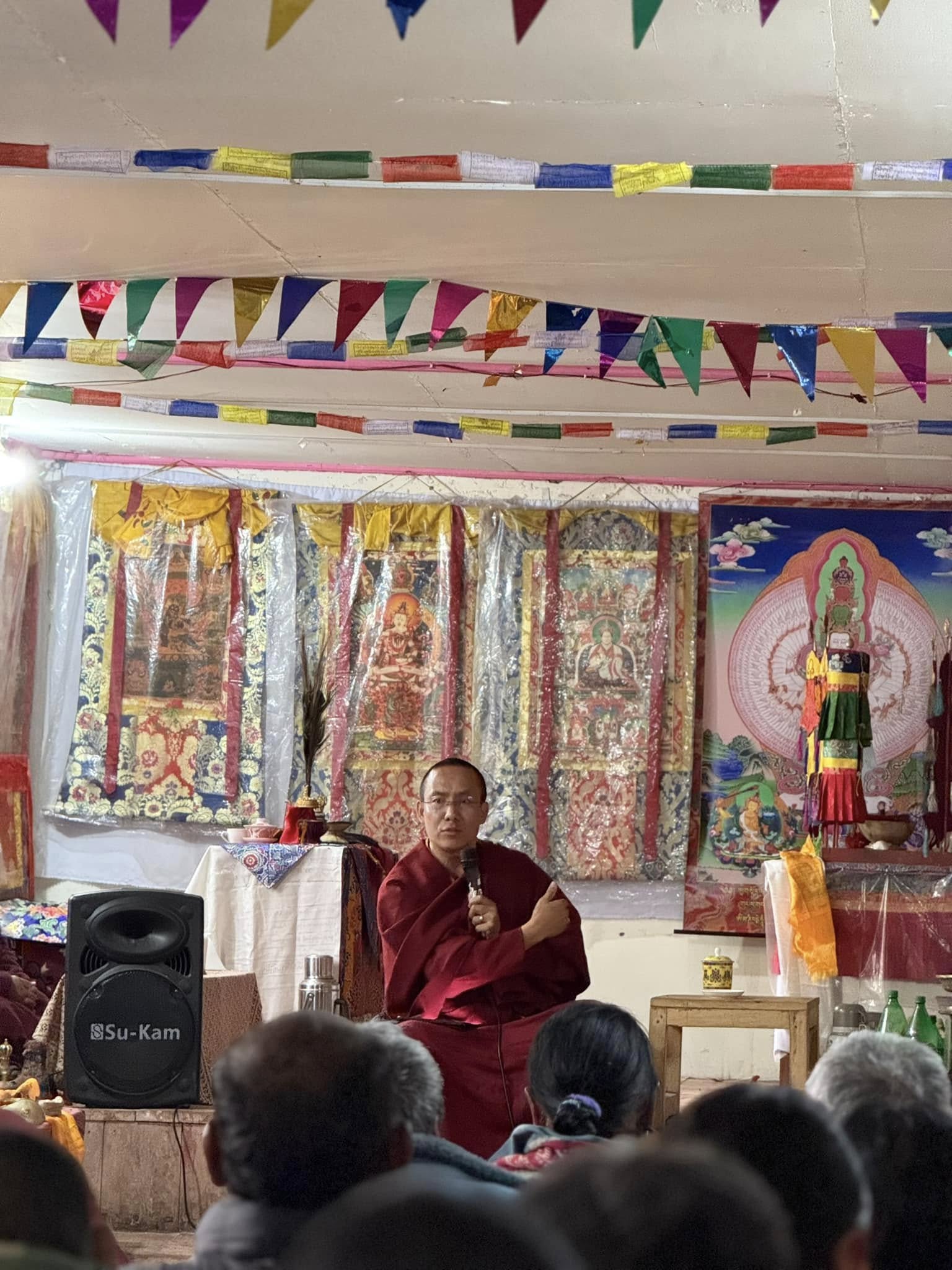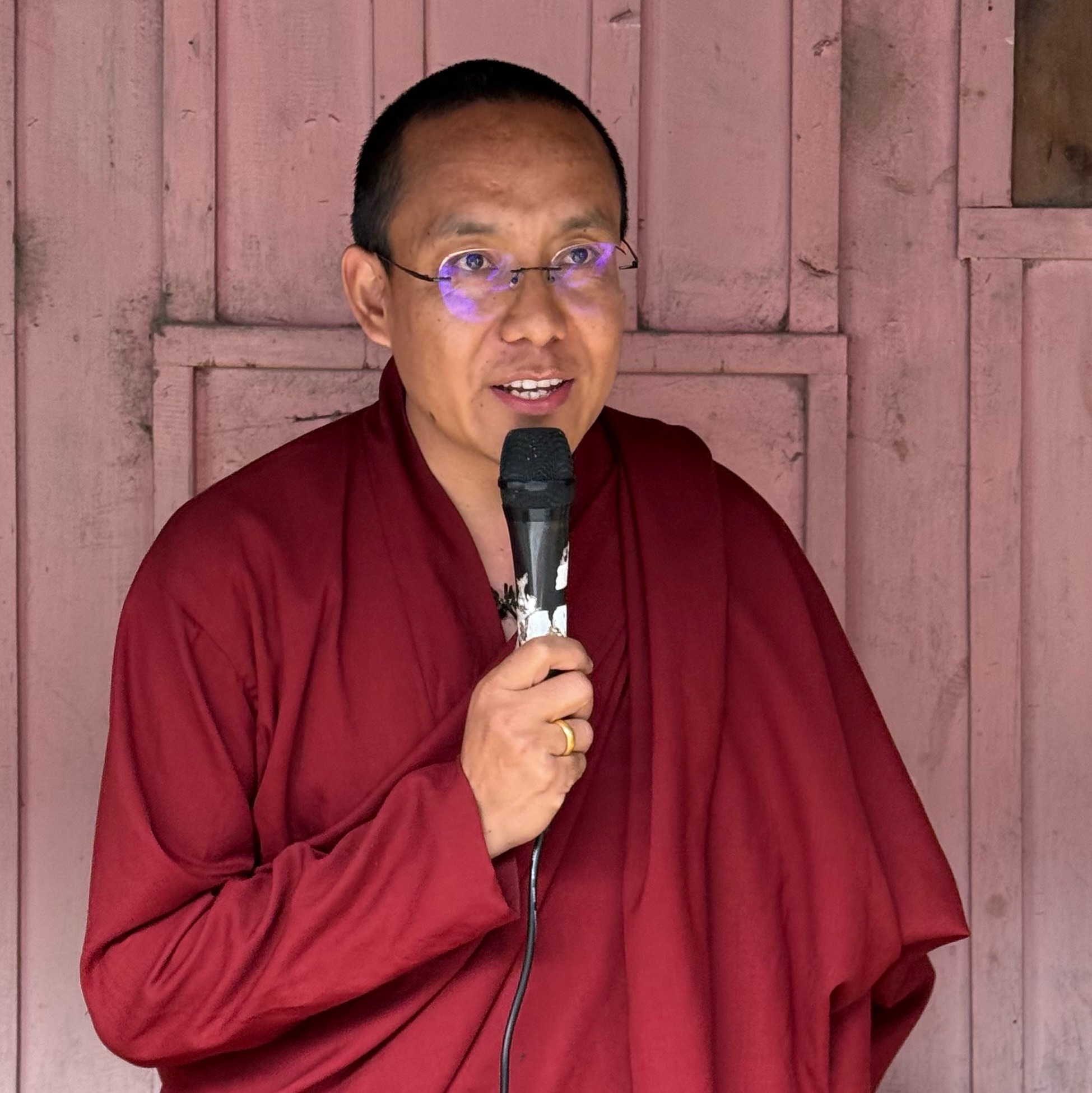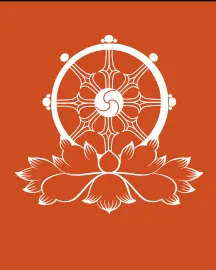
What Is Buddhism? – A Story from the Hills
In January 2025, during the Three Cups of Tea Monastic Teacher Training Program at the Sarnath International Nyingma Institute (SINI), we had the honor of hosting many bright and compassionate monastic educators. Among them was Tulku Galpo Tashi, a young tulku from a small village near Rara Lake, Nepal.
From an early age, he learned to read and write from his late father Rinpoche. In 1999, he entered Orgyen Mindrolling Monastery in India, where he studied the traditional practices of the lineage for about ten years. In 2008, after completing his basic education from Mindrolling primary school. In 2009 he joined Mindrolling college and studied there for 9 years. He graduated in 2018 and has been working as a teacher since then.
After the Three Cups training—which focused on how to teach Buddhism meaningfully to both Westerners and Himalayan communities (what Dzongsar Rinpoche affectionately calls "hillbilly Buddhists")—Tulku-la returned to his village for a short visit.
Tulku-la reflected on how the experience at SINI has inspired a new approach to community engagement. After the training, he felt motivated to connect more meaningfully with both local communities through informal gatherings and discussions on Buddhist values.
A Night by the Bonfire
One evening, a group of village youth approached Tulku-la, asking if they could organize a gathering. Delighted by the idea, he not only agreed but also generously contributed funds for homemade rice wine (chang) and snacks. The event was set to begin at 7 p.m., and by 8:30, most of the attendees—young people between 18 and 30—had arrived. They lit a bonfire, the flames crackling against the cool night air, filling the atmosphere with excitement.
Just as the festivities were about to begin, Tulku-la surprised everyone by inviting them to the village's spiritual hall first. Murmurs of curiosity spread through the crowd—Why gather there? Once inside, he posed four simple questions:
- What is the name of our (Buddhist) religion?
- What is the fundamental principle of the Buddha's teachings?
- Are performing pujas and playing instruments considered part of the Buddha's teachings?
- What is one key belief that Buddhists hold which other religions typically do not—and vice versa?
To his surprise, no one could answer. He had expected that at least 90% of them would respond—yet he was met with silence. He felt shocked, and even a little ashamed.
A few days later, he posed the same questions to the village elders and local administrators, hoping that their higher education might yield better results. But again, the responses fell short.
A Moment of Reflection
Tulku-la shared with us that this experience stirred something deep within him. He began to reflect: Why do my own people—those raised in a Buddhist culture—struggle to answer such basic questions about their own religion?
He realized that for many, Buddhism had become something external—rituals performed by others: monks, nuns, or lamas brought in during times of sickness, loss, or special ceremonies. It wasn't something they felt was theirs to understand, practice, or embody. Meanwhile, Western students—those he and many of his peers often travel abroad to teach—were able to engage with the teachings with clarity, curiosity, and depth.
"This realization struck a chord. Tulku-la recognized that he had a responsibility not just to teach in faraway places, but to serve his own community. To bridge the gap between tradition and understanding, between ritual and relevance."
This story deeply moved me. It reminded me why our collective efforts in monastic education matter—not only for the growing global community of Buddhist students, but just as urgently for the traditional communities where Buddhism has been part of the cultural fabric for generations.
How do we ensure these teachings remain alive and relevant—where they first took root?
A Shift in Perspective
After the training at SINI and with the presence of Dzongsar Khyentse Rinpoche, Tulku-la emphasizes a shift in his perspective: rather than just delivering teachings, he now prioritizes listening—seeking to understand what people already know or misunderstand about Buddhism. This change came from realizing that effective communication of the Dharma involves mutual understanding, not simply presenting doctrine.
📹 Video Reflection
In this video, Tulku Gyalpo Tashi shares his reflections in Tibetan about his return to his village and the questions that sparked a sense of responsibility within him: "Why do my own people… struggle to answer such basic questions about their own religion?"
From the Village
These photographs capture moments from Tulku Gyalpo Tashi's village and his work with the local community. Click any photo to view larger.





